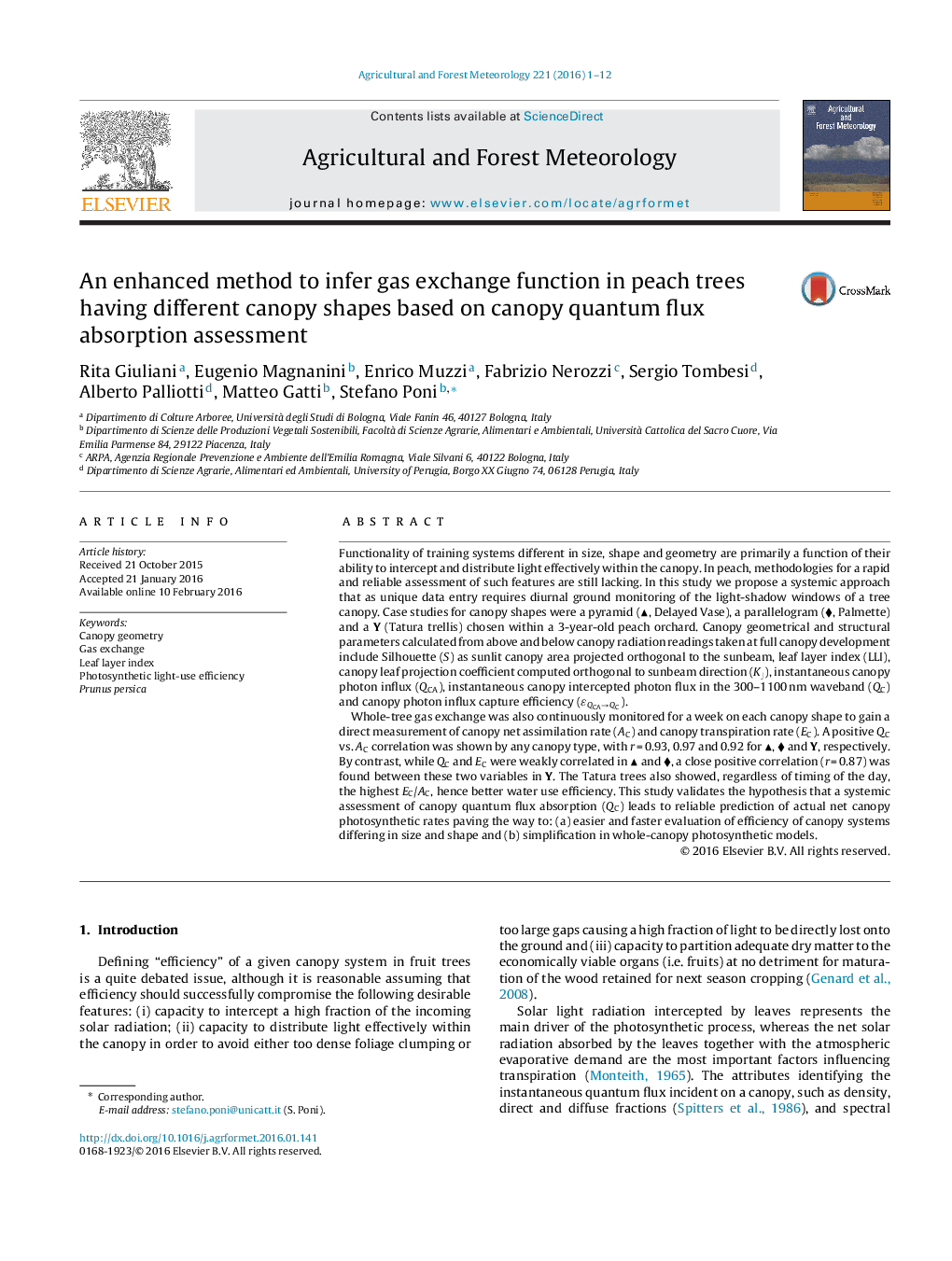| کد مقاله | کد نشریه | سال انتشار | مقاله انگلیسی | نسخه تمام متن |
|---|---|---|---|---|
| 81359 | 158312 | 2016 | 12 صفحه PDF | دانلود رایگان |
• Canopies showing efficiency in light interception and distribution is a must for any tree orchard.
• A method to assess efficiency in light use was tested on three different canopy shapes in peach.
• Canopy-intercepted photon flux (QC) is derived from ground-monitoring of light-shadow windows.
• QC was very closely correlated (r > 0.90) to whole-canopy net photosynthesis in all canopy shapes.
• QC was also closely correlated (r = 0.87) to whole-canopy transpiration in the Y trellis.
Functionality of training systems different in size, shape and geometry are primarily a function of their ability to intercept and distribute light effectively within the canopy. In peach, methodologies for a rapid and reliable assessment of such features are still lacking. In this study we propose a systemic approach that as unique data entry requires diurnal ground monitoring of the light-shadow windows of a tree canopy. Case studies for canopy shapes were a pyramid (▴, Delayed Vase), a parallelogram (♦, Palmette) and a Y (Tatura trellis) chosen within a 3-year-old peach orchard. Canopy geometrical and structural parameters calculated from above and below canopy radiation readings taken at full canopy development include Silhouette (S) as sunlit canopy area projected orthogonal to the sunbeam, leaf layer index (LLI), canopy leaf projection coefficient computed orthogonal to sunbeam direction (K⌋), instantaneous canopy photon influx (QCA), instantaneous canopy intercepted photon flux in the 300–1100 nm waveband (QC) and canopy photon influx capture efficiency (εQCA→QCεQCA→QC).Whole-tree gas exchange was also continuously monitored for a week on each canopy shape to gain a direct measurement of canopy net assimilation rate (AC) and canopy transpiration rate (EC). A positive QC vs. AC correlation was shown by any canopy type, with r = 0.93, 0.97 and 0.92 for ▴, ♦ and Y, respectively. By contrast, while QC and EC were weakly correlated in ▴ and ♦, a close positive correlation (r = 0.87) was found between these two variables in Y. The Tatura trees also showed, regardless of timing of the day, the highest EC/AC, hence better water use efficiency. This study validates the hypothesis that a systemic assessment of canopy quantum flux absorption (QC) leads to reliable prediction of actual net canopy photosynthetic rates paving the way to: (a) easier and faster evaluation of efficiency of canopy systems differing in size and shape and (b) simplification in whole-canopy photosynthetic models.
Journal: Agricultural and Forest Meteorology - Volume 221, 1 May 2016, Pages 1–12
